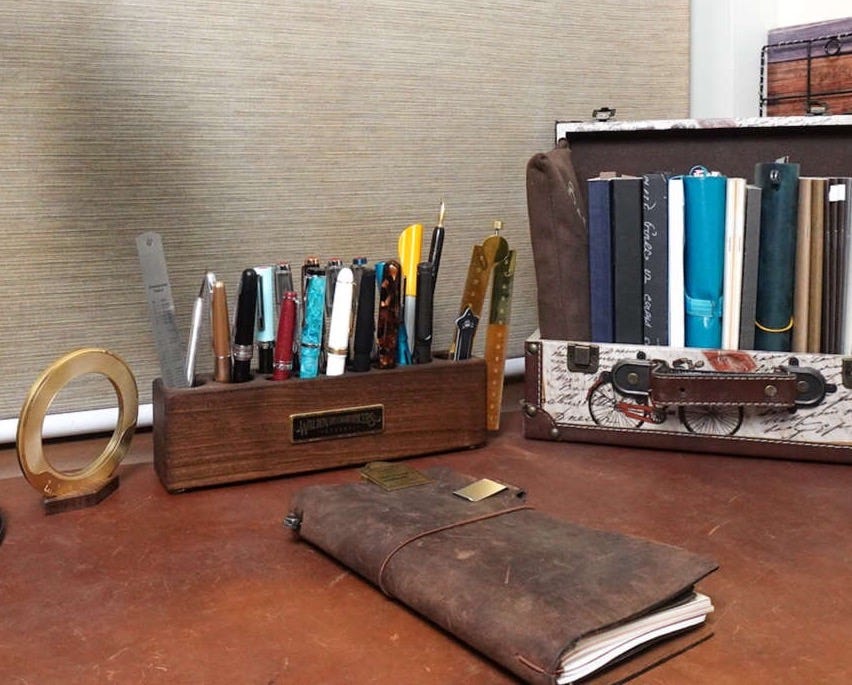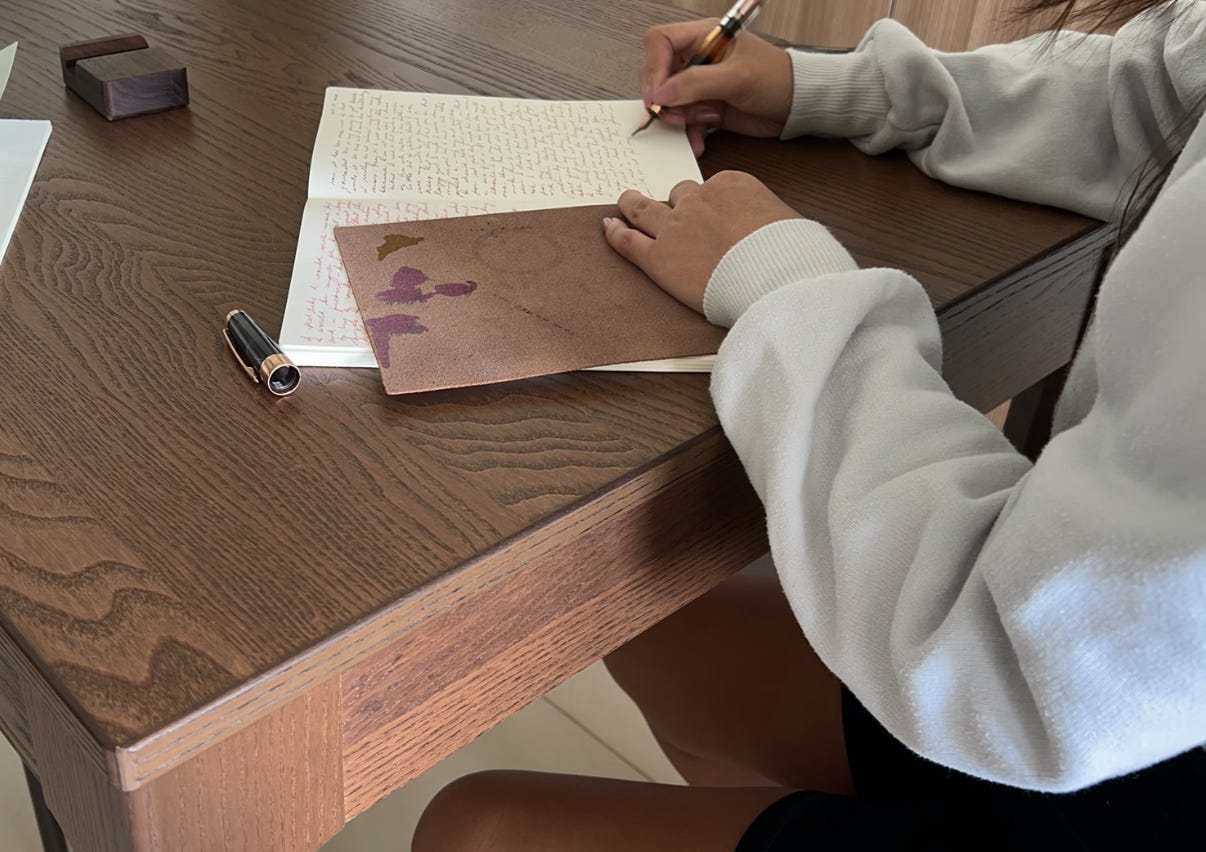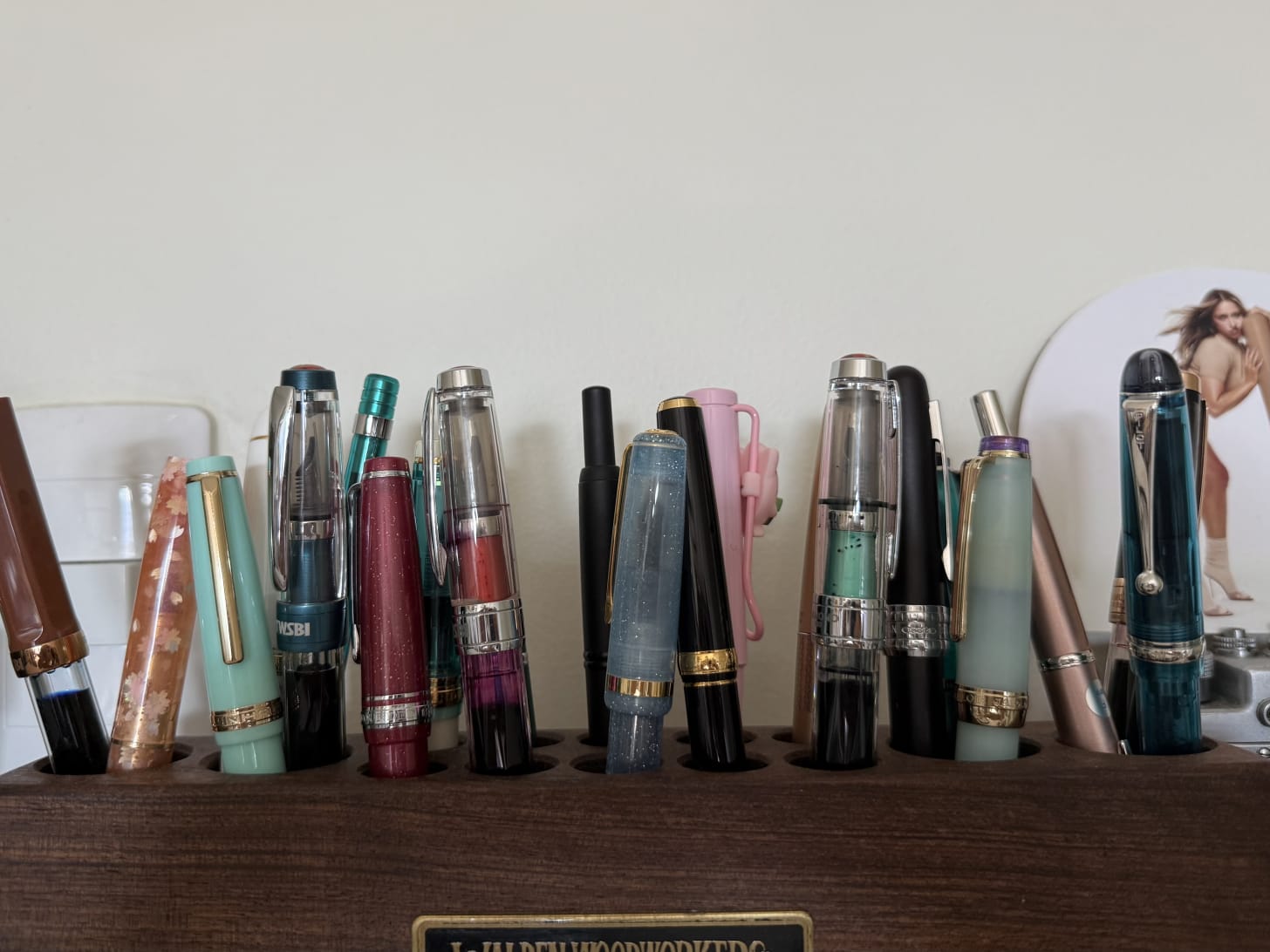Hey friends,
Did you know that I used to have a dedicated journaling desk? It actually happened by accident – my primary workstation was a built-in desk in my family home and became unusable after a storm caused the roof above it to leak.
So I had to move my computer setup to another desk. The damaged built-in desk sat empty for months while we got it repaired.
Discovery of the problem
During those months on my new workspace, I realized something puzzling. My new desk was larger than the built-in, so I was wondering why I couldn't journal more consistently– especially since there was more space. I was spending way too much time staring at screens (most of us were working remotely at this time). Any workspace seemed perfect for productivity but terrible for reflection. Even with my Traveler's Notebook (as my Bullet Journal) sitting right there next to my keyboard, I barely touched it. My brain had somehow connected that space with work mode, not thinking mode.
The accidental solution
When the built-in desk was finally usable again, I was deciding whether to convert it into a vanity. The logic was simple: in case another storm causes a leak, no electronics would be harmed.
But then I had a different idea: what if I turned this into a journaling-only (and hobby) space?
Setting up the desk was simple. I moved my old leather desk pad over, added a lamp, and kept my fountain pens within reach. No electronics allowed. Just paper, pens, and a window view.
It worked immediately. The physical separation forced me to be intentional about journaling time. Getting up from my computer and walking to the other desk created a mental shift – even though they were only a few feet apart. Turns out your brain creates strong associations with spaces, and I'd just given journaling its own dedicated zone.
Moving out, adapting the principle
Two years later, I moved to a one-bedroom apartment. No room for a second desk, but the lesson was crystal clear: I still refuse to journal at my work desk.
Now I journal at my dining table every morning. It's not as aesthetic as the old setup – my dining table is small and I have to clear it after journaling. But it serves the same purpose: creating boundaries between work (digital) and reflection (analog).
The walk from my work desk to the dining table takes maybe five seconds. But those five seconds signal to my brain that it's time to switch modes. Time to slow down and process thoughts on paper instead of screens.
The reality of a temporary setup
The dining table solution isn't perfect. I have to clear it every time to reduce clutter, especially since it's a temporary space that needs to function for meals too.
To combat this, I keep my daily driver notebooks on a nearby console so they're always within reach. My fountain pens stay on display – dual purpose since they look like decor.
Truthfully, I sometimes don't feel like journaling because of the setup. Especially if I didn't clean up the night before. There's something about facing a messy table that kills the motivation to sit down and write.
The principle still works, but it requires more intention now. I can't just walk over to a dedicated desk that's always ready. I have to actively create the space each morning (and therefore prepare it the night before).
Your journaling space can be a corner of your kitchen table, a chair by the window, your couch, a coffee shop – literally anywhere that isn't your work desk. The journaling nook looked great in photos, but it wasn't the concept nor the decor that made it work. It was the separation itself.
Still, I'd rather deal with clearing a table than trying to journal next to my computer. The few extra minutes of setup are worth maintaining that mental boundary between work mode and reflection mode.
🖋️, Jestine
P.S. tbh if I didn’t have a day job, I wouldn’t mind journaling next to my laptop 🤣







